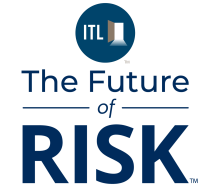Sunny Wadhwa, managing director/head of asset management sales at Conning, spoke with Andy Pace, managing director/portfolio manager at Conning, and Don Townswick, managing director/director equity strategies at Conning, about the current state of the equity market and why they think the firm's high-dividend equity strategy is ideal for insurance portfolios.
What is causing current market volatility?
DT: President Trump's April 2 "Liberation Day" introduction of new tariffs certainly led to a spike in volatility, but there has been a great deal of uncertainty gripping markets for some time now.
There are some outstanding questions about fiscal and regulatory policy that still need to be answered: Will tax cuts from Trump's first term be allowed to expire? Will the Trump administration bring forth a lighter regulatory environment, which would likely be helpful to businesses? Will the economy be slowed by federal budget deficits, and will immigration enforcement hamper labor markets? We also don't know how the U.S. Federal Reserve will respond to sticky inflation and economic growth concerns.
With this much uncertainty, it is no surprise that equities are volatile and that they may remain so for an extended period.
Will equity market conditions change? What do you think will happen?
DT: Markets are always changing, and this market will, as well. As we study the current dynamics, we actually see a silver lining in the outlook for dividend-equity stocks.
The stocks recently dominating S&P 500 Index performance have been in a narrow band known as the "Magnificent 7" stocks: Alphabet, Amazon, Apple, Meta, Microsoft, Nvidia, and Tesla. Most other stocks in the index have been performance laggards. The outstanding earnings (which are closely related to net income) performance of the "Magnificent 7" have begun to taper and are projected to settle into a lower range, while earnings for the rest of the stocks in the S&P 500 are projected to rise through the rest of 2025.
We think this implies that a correction in the "Magnificent 7" stocks could happen along with a broadening market in which the rest of the market goes down less than the "Magnificent 7," while providing competitive returns when the market turns up again. The first implication already seems underway, as high-quality stocks have dropped far less than the "Magnificent 7" stocks. It remains to be seen whether the second part of that hypothesis will come to pass.
How are Conning clients reacting to the recent equity volatility?
DT: As most of our clients are insurance companies and tend to be fairly risk-averse equity investors, they are holding their allocations; we are not seeing wholesale buying or selling.
However, in many client conversations we've noted that a large number see this "tariff induced" selloff as a buying opportunity, once the acute uncertainty abates. Our clients have a very long horizon for their equity investments, and equities are usually the longest-duration asset they own. They often look to add during market dips or in situations like we are currently in, and like us, many clients believe the current selloff is overdone. The broadening of the market away from the "Magnificent 7" stocks has certainly been welcomed by our clients after two years of a small number of stocks driving the majority of the market's returns.
Given the volatility, why do insurers include equity in their portfolios at all?
AP: NAIC and state regulatory requirements limit insurance portfolio allocations to equity, and while most insurers don't like surplus volatility, they do understand the need to have an equity allocation to grow surplus. Conning's recommended approach in recent years has been an allocation to our lower-volatility, higher-dividend strategy.
Why do you support an equity strategy focused on dividend-paying stocks?
AP: Initially, what led us to develop this strategy was the period of historically low interest rates post-Great Financial Crisis: We saw the equities of many high-quality companies offering dividend yields that exceeded the yields of their long-term debt. The dividend income, plus the potential for growth, as well as the lower beta (historical beta of 0.82 to the S&P 500) and higher quality approach (average NRSRO credit rating of the holdings of A), made a strong case for insurers to consider an allocation to this strategy, either solely or as a complement to their existing equity allocations.
Lastly, dividends have contributed a meaningful share of the total return of equities over long time horizons and, in periods of uncertainty or volatility, provide a stabilizing element to performance.
Tell us about the process: How do you build the portfolio?
AP: Our goal is to create a diversified portfolio of companies with strong balance sheets and free cash flow, that have higher dividend yields than the S&P 500, a history of stable payouts and dividend growth, and potential for capital appreciation.
Our rules-based method of building the portfolio has been the same since inception, repeated in the last month of each quarter and based on a disciplined three-step process (quantitative screening, qualitative review, and finally name selection) designed to filter the universe of potential investment candidates from the S&P 500. So not only is this a low-volatility, high-quality, value-oriented approach, it is also a low-turnover/cost approach, as we only trade on a quarterly basis.
How do insurance portfolios benefit from this dividend-focused equity strategy?
AP: In addition to the higher dividend income, insurers have also benefited from the strategy's strong historical risk-adjusted return, which since inception has provided upside market capture of 90% of the S&P 500's gains; the downside protection has been evident with a downside market capture of only 82% of the index's declines.
Historically, the strategy has performed best when equity markets are experiencing volatility, such as we've seen this spring. Our clients have found having a higher-quality, larger-capitalization, lower-volatility portfolio quite valuable during periods of market uncertainty.
Are there other benefits?
AP: We've talked about many benefits already, but we can't stress enough the importance of the dividend income -- insurance companies can never have enough income! While we do not view equity dividends as a substitute for fixed-income coupons, we believe that an equity component offering a higher dividend than the broad market is of value to income-focused insurers. Lastly, I want to add that our portfolio approach is equal-weighted rather than market-weighted. This strategy was built with insurance companies in mind, and we firmly believe that an equal-weighted approach offers better diversification, reducing concentration risk and potentially leading to better risk-adjusted returns.






